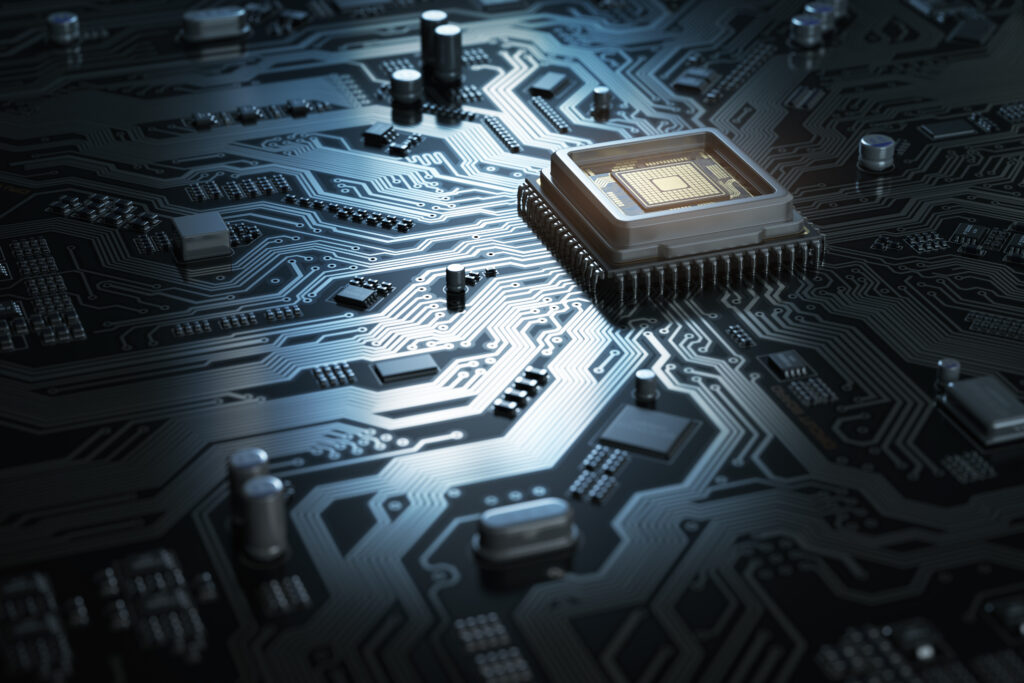Founded in 1978 and headquartered in Boise, Idaho, Micron Technology, Inc. has grown into one of the world’s leading innovators in memory and storage solutions. With over four decades of engineering excellence, Micron has become a cornerstone of the global semiconductor industry, empowering modern digital infrastructure through its cutting-edge DRAM, NAND, and NOR flash memory technologies. The company operates under its flagship Micron® and Crucial® brands, serving a broad spectrum of end markets including data centers, AI and machine learning systems, mobile devices, automotive electronics, industrial IoT, and client computing.
As the demand for high-performance memory and scalable storage continues to accelerate in the age of artificial intelligence, 5G, cloud computing, and edge intelligence, Micron is uniquely positioned at the nexus of these megatrends. The company is not only a key supplier of critical hardware components but also a vital enabler of transformative technologies that power smart cities, autonomous vehicles, intelligent manufacturing, and immersive digital experiences. Its extensive portfolio of advanced memory technologies is designed to deliver high speed, bandwidth, energy efficiency, and reliability—attributes essential for processing vast volumes of data in real time.
Micron’s global operations span the United States, Asia, and Europe, with state-of-the-art fabrication facilities and R&D centers that drive relentless innovation across every stage of the semiconductor value chain. The company has invested billions into advanced manufacturing processes such as 1-gamma DRAM and next-generation 3D NAND, ensuring leadership in density, performance, and cost efficiency. Moreover, Micron continues to deepen its collaborations with hyperscalers, enterprise partners, and device manufacturers to tailor its memory solutions for AI accelerators, data center servers, mobile SoCs, and emerging edge AI platforms.
In recent years, Micron has expanded its focus to include strategic U.S.-based manufacturing initiatives supported by the CHIPS and Science Act, further reinforcing its commitment to supply chain resiliency, domestic innovation, and long-term national competitiveness. The company’s leadership in high-bandwidth memory (HBM)—a crucial component in powering AI workloads—solidifies its role as a foundational player in the rapidly growing AI infrastructure market.
With a reputation for operational excellence, strong financial discipline, and a technology roadmap aligned with the world’s most advanced computing demands, Micron Technology is not just riding the wave of digital transformation—it’s building it. For investors and technologists alike, Micron represents a powerful force shaping the future of data, intelligence, and connectivity on a global scale.
Record-Breaking Q3 FY2025 Performance Underscores Strategic Dominance
Micron’s third-quarter fiscal 2025 results confirmed its position as a key enabler of the AI revolution. The company posted record quarterly revenue of $9.30 billion, representing a significant increase from $8.05 billion in the prior quarter and $6.81 billion in the same period a year earlier. This performance was fueled by all-time-high DRAM sales and a near 50% sequential growth in its high-bandwidth memory (HBM) segment, which is vital for powering AI accelerators from the likes of Nvidia and AMD.
Data center revenue more than doubled year-over-year, reaching record levels, while Micron’s consumer-facing segments also demonstrated strong sequential momentum. CEO Sanjay Mehrotra emphasized that the company is on track to deliver record full-year revenue with solid profitability and free cash flow, reflecting both operational excellence and massive demand tailwinds from AI-driven applications.

CHECK THIS OUT: MicroVision (MVIS): A Top Pick in Autonomous Tech Stocks and Innoviz (INVZ) May Be Severely Undervalued — Investors Shouldn’t Ignore This Stock.
Robust Profitability and Free Cash Flow Validate Financial Strength
Micron’s financial execution was equally impressive. GAAP net income for the quarter stood at $1.89 billion or $1.68 per diluted share, while non-GAAP net income reached $2.18 billion or $1.91 per diluted share. Gross margins improved to 39.0% on a non-GAAP basis, and operating income rose to $2.49 billion, nearly tripling year-over-year. Adjusted free cash flow hit $1.95 billion, bolstered by $4.61 billion in operating cash flow. This strong liquidity position is further reinforced by the company’s $12.22 billion in cash, marketable securities, and restricted cash.
Micron also declared a quarterly dividend of $0.115 per share, signaling continued confidence in its long-term cash generation capabilities and commitment to shareholder returns.
Bullish Q4 Guidance Reflects Rising Demand and Pricing Power
Micron’s guidance for the fourth quarter of fiscal 2025 points to accelerating momentum. The company expects revenue to climb to $10.7 billion, representing approximately 15% sequential growth. Non-GAAP gross margin is projected at 42%, while diluted EPS could reach $2.50. These projections illustrate how Micron is beginning to scale profitably into the AI infrastructure wave and benefit from improving memory pricing and tight supply-demand dynamics in the DRAM market.
With data center DRAM now comprising more than half of the company’s revenue base, Micron is strategically aligned with the fastest-growing vertical in the semiconductor ecosystem.
High-Bandwidth Memory and DRAM: Core Growth Drivers into 2026
Micron’s HBM business is proving to be a crown jewel. Management confirmed that HBM capacity is already sold out through 2025, reflecting insatiable demand from cloud providers and AI chipmakers. The company’s ongoing investments in advanced DRAM nodes, including LPDDR5X and its 1-gamma process technology, position it to lead the market in performance-per-watt and density. As AI inference and training workloads become increasingly memory-intensive, Micron is well-positioned to expand its total addressable market and deepen customer relationships.
The company is also expanding its domestic manufacturing capabilities in the U.S., including sites in Idaho, New York, and Virginia, supported by government incentives through the CHIPS Act. These projects enhance Micron’s long-term margin profile, ensure supply chain resiliency, and align with growing geopolitical pressure to localize semiconductor production.
Valuation Disconnect Presents a Rare Opportunity
Despite Micron’s historic financial performance and strong secular tailwinds, the stock still trades at a discount compared to its peers in the semiconductor space. With forward P/E ratios hovering around 9–10x and significant operating leverage ahead, the market appears to be underappreciating Micron’s role in the AI hardware stack. Analysts from firms like Wedbush and New Street have issued price targets ranging from $145 to $150, implying potential upside of 20–50% from current levels.
As the AI boom intensifies and memory demand outpaces supply, Micron stands to benefit from rising average selling prices, operating margin expansion, and multi-year earnings growth.
Balance Sheet Strength and Capital Allocation Discipline
Micron’s balance sheet remains a key asset. With $10.16 billion in cash and equivalents and manageable long-term debt of $15 billion, the company maintains significant financial flexibility to invest in R&D, expand capacity, and return value to shareholders. Over the past nine months, Micron generated $11.8 billion in cash from operating activities and allocated over $10 billion toward strategic capital expenditures, with additional funding from government grants bolstering capital efficiency.
The company’s equity base now exceeds $50 billion, reflecting the cumulative effect of earnings growth and prudent capital stewardship. Shareholder equity continues to expand alongside Micron’s strategic footprint in next-generation semiconductor technologies.
Micron’s Strategic Outlook Remains Unmatched
Looking ahead, Micron is exceptionally well positioned to capitalize on a range of high-growth trends including generative AI, cloud computing, 5G proliferation, and automotive autonomy. With DRAM and NAND acting as foundational technologies for all modern computing, Micron’s competitive moat continues to widen through innovation, scale, and deep customer integration.
The company’s Q3 FY2025 performance is not just a short-term beat—it is the culmination of years of investment in R&D, process improvement, and strategic positioning. Its guidance for the fourth quarter and beyond reflects growing confidence in sustained demand, pricing stability, and capacity discipline.
Conclusion: Micron Technology Offers One of the Most Compelling AI Infrastructure Plays
For investors seeking long-term exposure to the AI infrastructure build-out, Micron Technology presents an outstanding risk-reward profile. Its unmatched position in high-bandwidth memory, data center DRAM, and advanced NAND technologies provides a high-margin growth engine into the latter half of the decade. As the AI ecosystem expands, Micron will remain one of its most critical enablers—both in performance and in scale.
The stock’s current valuation relative to its growth trajectory suggests a significant upside opportunity. In a market hungry for foundational tech, Micron delivers exactly that—with world-class execution, durable financials, and an innovation pipeline built for the AI era.
READ ALSO: Golden Matrix Group (GMGI): The Explosive iGaming Stock You’re Probably Sleeping On and This AI Stock Powers Millions of Conversations Daily—LivePerson (LPSN) Deserves a Spot on Your Watchlist.






